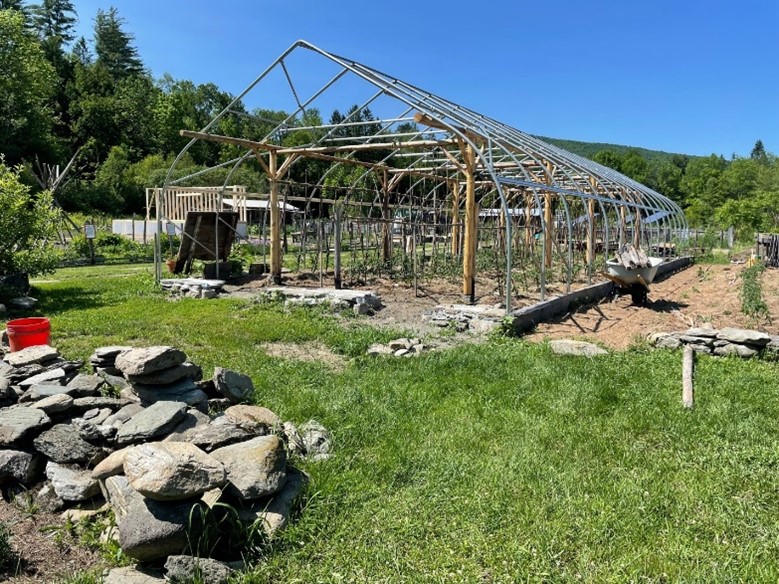By Noah Gilbert-Fuller, VT Agency of Agriculture, Food & Markets
Spring is the time for construction across Vermont farms, with warm weather bringing thoughts of improvements and additions needed around the farm. Questions often come up when a farmer is planning to put up a structure about where farm structures can be located, what kinds of permits they may need, and what activities can be done with the structure. Farms planning to build a structure should look towards the Required Agricultural Practices (RAPs) to see what requirements, rules and exemptions may apply.
Vermont farms as defined in the RAPs are required to comply with regulations for agricultural practices, which includes the construction and maintenance of farm structures. A farm structure is defined as any structure used to carry out farming practices, including the storage of agricultural equipment, wastes, feed and fertilizers, the keeping of animals, the storage, preparation and sale of agricultural products produced on the farm, and greenhouse structures.
Farms and farm activities that are regulated by the RAPs are exempt from regulation under local bylaws. That means no agricultural activity on a property that has been determined to meet the definition of a farm can be restricted or prohibited by a town, since those activities are instead regulated by the Agency of Agriculture, Food and Markets. Farm structures also gain exemptions from bylaws that would require permitting for construction. However, per the RAPs, farm structures must still meet any setback requirements established by their town.
Setbacks can determine how far a structure must be from the front, sides, and back of a property facing a road, and other specific places depending on which zoning district you’re in. Towns may also adopt overlay districts, such as flood hazard or natural resource districts, that apply to a targeted area across multiple districts and may come with additional setback standards. Check in with your local Zoning Administrator or Town Clerk if you have questions about which setbacks apply to your property.
Before construction on a farm structure begins, farms are required to send a copy of a site plan for their structure to their local Zoning Administrator or Town Clerk for review. Site plans must include the dimensions of the proposed structure and setback distances from property lines. In certain cases, structures that do not meet the required setback distances due to circumstances related to the land that cause challenges for the farmer, farms may submit a request for a setback variance for their structure.
While planning for this year’s growing season, keep in mind the resources and information available from the Vermont Agency of Agriculture, Food and Markets regarding farm structures and how they are regulated. Information about the definitions of farms, farming, farm structures and setback variances can be found at https://agriculture.vermont.gov/water-quality/regulations/farm-definitions-and-determinations.
For any questions around the Required Agricultural Practices, contact Noah Gilbert-Fuller at Noah.Gilbert-Fuller@vermont.gov or at 802-505-3407.


Photo: A hoophouse in progress. Contact your Town Clerk or Zoning Administrator with a town plan before constructing a farm structure.

